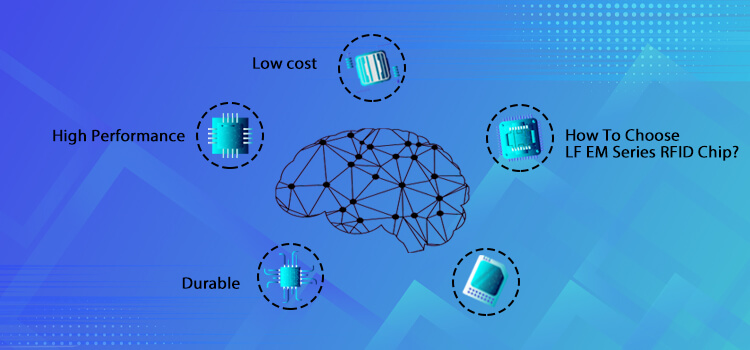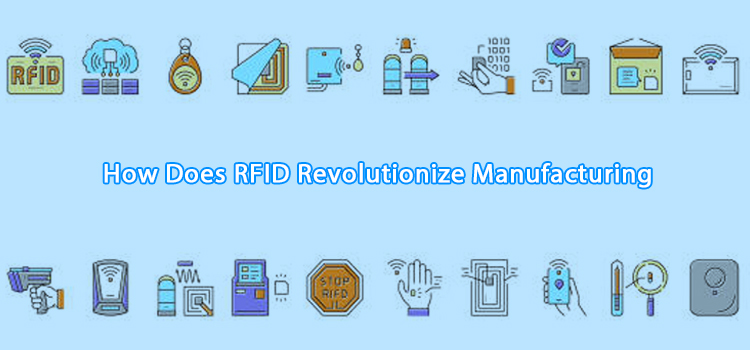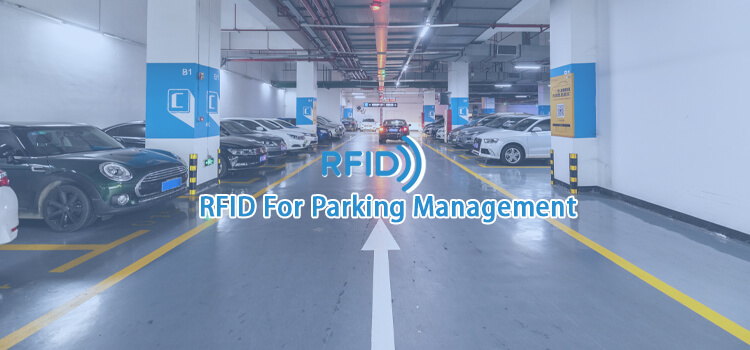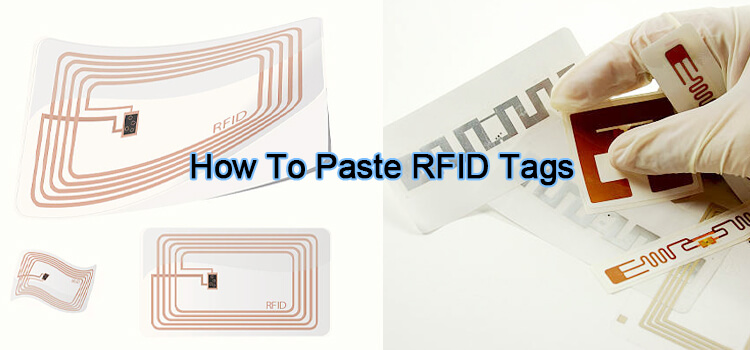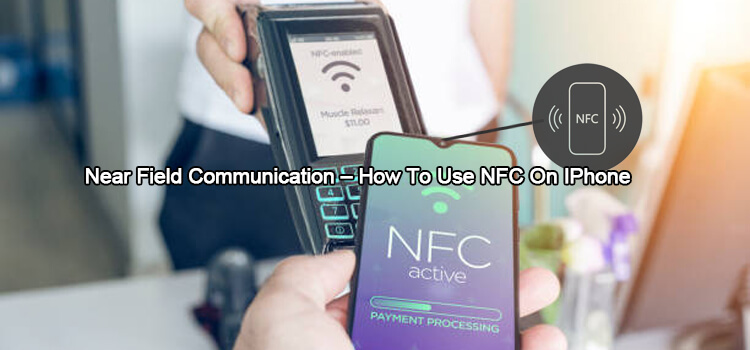EM chip refers to a contactless RFID chip that supports read/write functions. It is a product of EM Microelectronics of Switzerland, and it operates at 100 kHz- 150 kHz.
The chips conform to ISO 11784/11785 and ISO FDX/B standards. As such, they have a wide range of applications, including animal identifications, access control, and logistics automation.
They come in various forms, but the most common ones are EM4100, EM4200, and EM4305. So, what is the difference between them? Let’s find out.
What is LF EM Series Chip?
LF EM series are low-frequency RFID chips that operate at 125 kHz-150 kHz. They are mainly used in animal identification and access control.
Different industries have adopted these chips for different purposes. In the livestock industry, chips are implanted into animals to identify them. And in the access control industry, they are used to unlock doors or gates.
The rapid adoption of the tags is attributable to the following factors:
- Low cost. LF EM tags are the cheapest RFID tags on the market. This is because they have a simple design and do not require a lot of power to operate.
- Durable. The tags are made of durable materials and can withstand harsh environments.
- High Performance. The tags are highly effective and can read and write data from a distance. Their performance is not compromised by interference from other wireless signals. They also work well in liquid/metallic environments, making them ideal for animal tracking.
As such, LF EM tags offer many benefits to your business at relatively affordable prices.
EM4100
EM4100 tags carry 65-bits of Read-Only memory. As such, they are not as versatile as EM4305 tags. However, they are among the cheapest tags on the market and are ideal for low-frequency applications.
The tags operate within a frequency of 100 kHz to 150 kHz. As such, they are ideal for use in livestock identification, access control, and other low-frequency applications.
It uses different data modulation techniques, including PSK, Manchester, and BiPhase encoding systems.
Applications of EM4100
You can use these tags in a wide range of applications, including:
- Animal identification. The tags can be implanted in animals to identify them. This is especially useful for livestock identification and tracking.
- Access control. You can use the tags to unlock doors or gates.
- Logistics automation. The tags can be used to track goods and monitor their movement throughout the supply chain.
EM4200
EM4200 is a CMOS IC (Integrated Circuit) offering high-performance with Read-Only RFID transponders. You can use it instead of the EM Microelectronic-Marin EM 4005/4105 and EM4100/4102 Read Only ICs.
These chips offer a higher read range and bigger resonant capacitors on their coil terminals (with 250pF and 210pF options). As such, they are ideal for use in long read range applications.
Additionally, these chips store 128-bit unique codes that are laser-programmed in their ROM. However, you can also get 64-bits and 96-bits ROM. They are usually pre-coded with a specific code if you need them for a particular application.
How E4200 Chips Work
The circuit gets its power from an external coil connected to the chip. The coil creates a magnetic field that powers the chip and provides energy for data transmission.
When someone wants to read the tag, they generate a signal that is received by the coil. This signal is converted into an electrical current, which powers the chip and allows it to transmit data from its pre-programmed laser ROM.
Features of E4200 Chips
- Several data encoding options, including Biphase, FSK, Manchester, and PSK
- Comes with multiple resonant capacitor integrated options ( 250pF, 75pF, and 210pF)
- Has an on-chip voltage limiter and rectifier
- Works within a temperature range of -40°C to +85°C
- No need for an external buffer capacitor
- Low power consumption and top-notch performances
Applications of E4200
- Access Control
- Animal Identification based on ISO11785 (FDX-B) protocols
- Logistics Automation
- Waste Management Standard (BDE)
- Industrial Transponder
- Anti-counterfeiting
EM4305
EM4305 has the same characteristic as EM4205. It is a CMOS chip that offers high reading and writing performance. It is suitable for low-cost solutions, such as livestock tracking. Additionally, these tags are compatible with the EM4469/4569 communication protocols.
Features of EM4305
- Relatively Bumped. These tags come with enlarged pads customized to accommodate two coil inputs.
- Direct Antenna Connection. These tags do need a module to work optimally.
Additionally, the EM403 tags come with a 330pF resonant capacitor version that helps to improve the performance of antenna-based systems.
How EM4305 Tags Work
EM4305 tags work by transmitting and receiving data wirelessly. They use an inductive coupling to send and receive signals from a reader. The integrated circuit (IC) is continuously powered by a 125 kHz magnetic field, through an external coil.
This IC stores data in programmed 32-bits Unique Identifier Numbers (UID). Once excited, the IC reads information from the internal EEPROM and transmits it out to the reader. It achieves this by switching on/off a resistive load parallel to the big coil using modulation index.
This way, the data is transmitted as a series of short and long bursts that can be picked up by the reader.
Additionally, the EM 4305 supports Manchester data encodings and bi-phase operations. As such, it can be used in complex systems where authentication and security are essential.
Applications of EM4305 Tags
- Animal identification (following the ISO FDX-B protocols)
- Waste Management Standard (BDE)
- Access control
- Pigeon races standard
- Industrial applications
LF EM Series RFID Chip? EM4100? EM4200? Or EM4305? Which Is Best for Your Business?
When selecting an LF EM series RFID chip, there are a few factors to consider:
- Operating Frequency. The chips operate at different frequencies, so you need to decide which one is best for your needs. 125 kHz and 150 kHz are the most common frequencies.
- Memory Size. The tags come with different memory sizes, so you need to choose one that meets your needs.
- Antenna Size. The tags also come with different antenna sizes, so you need to choose one that is compatible with your application.
- Applications. The chips are designed for a variety of applications, so you need to decide which ones are the most relevant to your business.
Overall, these chips offer high-quality performance and are a great option for several applications. If you’re unsure which chip is best for your needs, contact EM manufacturers for assistance. This way, you can be sure you’re getting the right chip for your business.

